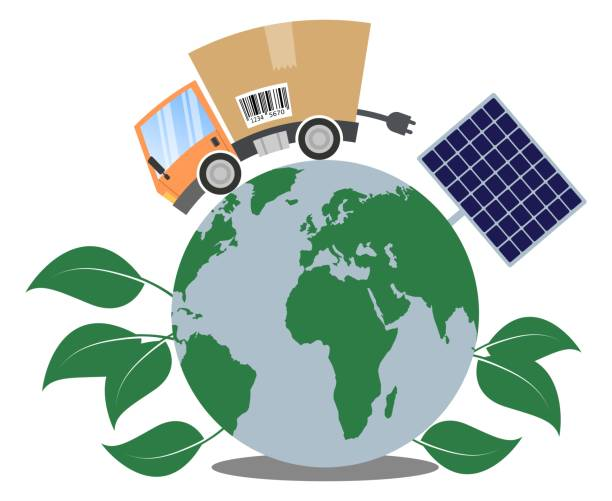The Complete Guide to Achieving a Sustainable Supply Chain
Achieving a sustainable supply chain requires a comprehensive and holistic approach that takes into account the entire supply chain, from suppliers to customers.
As the world becomes increasingly aware of the importance of sustainability, companies are under pressure to adopt sustainable practices throughout their operations.
Many organizations are now turning their attention to sustainability and the role that the supply chain can play in achieving sustainability objectives.
There are a number of reasons for this, including the need to respond to stakeholder demands, the desire to reduce environmental impact, and the opportunity to improve financial performance.
Achieving a sustainable supply chain is essential to reducing the environmental impact of businesses and ensuring the long-term viability of natural resources.
Every organisation is different and there is no one-size-fits-all solution, but many best practices can be followed to achieve success.
This basically requires a deep understanding of the issues and challenges in making the supply chain more sustainable.
In fact, by implementing some simple changes, companies can make a big difference in the sustainability of their operations.
However, the most important thing is to start taking action and making progress towards sustainability.
This guide provides an overview of how companies can make their supply chains more sustainable. Sourcing materials from suppliers that use sustainable practices, implementing green transportation solutions, and adopting lean and green manufacturing practices are all effective ways to improve sustainability.
What is a sustainable supply chain and why is it important?

These days, it is becoming more and more important to be sustainable. There are many challenges that we face, like climate change, dwindling resources, social inequality, etc. Staying sustainable will lessen these problems.
Sustainable development is one that meets the needs of the present without compromising the needs of future generations. This development can be achieved through environmentally friendly, socially responsible, and economically viable practices.
Therefore, a sustainable supply chain is a chain of production, distribution, and consumption that minimizes environmental impact and maximizes social and economic benefits.
In other words, it is a supply chain that is designed to be environmentally friendly and have a positive social impact.
It takes into account the environmental impact of the materials and products used, the working conditions of the employees involved, and the social impact of the company’s operations.
Making a supply chain more sustainable can be done by: reducing energy usage, using recycled or renewable materials, investing in green infrastructure, and supporting fair labor practices across the supply chain.
A sustainable supply chain is important because it helps to protect the environment and improve the lives of the people involved in the supply chain.
Businesses can also benefit from sustainable supply chain practices in various ways, such as reducing costs, improving brand reputation, and attracting and retaining top talent.
The benefits of a sustainable supply chain

There are many benefits to having a sustainable supply chain, including reducing environmental impact, improving social and economic conditions, and creating a more efficient and effective supply chain.
The implementation of a sustainable supply chain is good for the environment because it minimizes the environmental impact of the production, distribution, and consumption of goods and services.
Some of the several environmental benefits include eliminating waste, reducing pollution, and decreasing the use of natural resources through recycling. Thus, it can also help to conserve natural resources.
A sustainable supply chain is also good for society because it improves social and economic conditions by creating jobs, improving working conditions, and providing fair wages.
Additionally, sustainable supply chains can also be more efficient and cost-effective than traditional supply chains.

Sustainable supply chain management can lead to improved performance that provides support for the business case. Studies have found a positive link between supply chain practices and business-related metrics: market-based, operational-based, and accounting-based forms of firm performance.
Other studies found that firms with good supply chain management had better results in their accounting, costs, and liquidity
There is also strong evidence that sustainable integration of internal processes, suppliers and customer fosters green managerial innovation and process innovation. Thus, green managerial innovation positively impacts a business’s financial performance
Sustainable practices can help to reduce waste, increase efficiency, and improve communication and coordination among supply chain partners.
Moreover, the sustainable supply chain is good for sectorial players as well.
For example, the large-scale production of sustainable products allows for low-cost diversification from product range to product type.
Organizations utilizing sustainable supply chains are also able to increase their profits through increased efficiency.
Strategies for achieving a sustainable supply chain
A sustainable supply chain is a supply chain that is economically, socially, and environmentally sustainable. The three pillars of sustainability are economic, social, and environmental.
Sustainable Supply Chain relates to an organization’s dedication to environmental, social, and governance issues. Sometimes these questions also pertain to financial performance. That is why investors are interested in these goals because they relate ESG to investment decisions.
Hence, the use of ESG goals is becoming more widespread. They are often measured and assessed with ESG metrics that show how well a company aligns with its sustainability performance.

In order to achieve a sustainable supply chain, companies should consider the following strategies:
Reduce the environmental impact of the products across the supply chain
- Designing them with less material or with recycled materials.
- Reducing the health impact of the products by making sure that they are safe, not toxic, and have a low chance of causing illness.
- Creating an effective waste management system.
- Reusing and recycling materials.
- Implementing green transportation solutions
- Adopting lean and green manufacturing practices
- Using less energy in the production process
- Using sustainable packaging.
Reduce the social impact of the products across the supply chain
- By making sure that they do not exploit workers or use child labor.
- Sourcing materials from suppliers that use sustainable practices
Reduce the economic impact of the products across the supply chain
- Making sure that they are affordable to low-income people and can be repaired easily.
- Minimize procurement costs through bulk purchasing and negotiated contracts.
- Investing in sustainability.

It would be wise to make sure that you have a sustainable supply chain in place. It ensures that your business thrives for years to come and your consumers are invested in the brand.
Key Actions to maintaining a sustainable supply chain:
- Review and understand your company’s ecological footprint.
- Conduct a comprehensive review of your supply chain to identify areas where improvements can be made.
- Work with suppliers to develop environmentally friendly practices.
- Educate employees about the importance of sustainable supply chain practices.
- Advocate for sustainable practices within your industry.
- Continuously monitor and improve upon your company’s sustainable supply chain practices.
Conclusion
The demand for raw materials is expected to grow as the world population grows. Not only will this affect the cost of raw materials, but also their availability.
We should use the resources that are available to us, but we should also be proactive about understanding our environment.
In order to utilize our natural resources to their fullest potential, we need a sustainable supply chain. This means providing what people want while keeping in mind its social and environmental impact.
Thus, it is important that businesses work together with suppliers and customers.
There are many ways to achieve a sustainable supply chain. These include increasing efficiency, reducing waste, using sustainable materials, working with sustainable suppliers, and streamlining processes.
